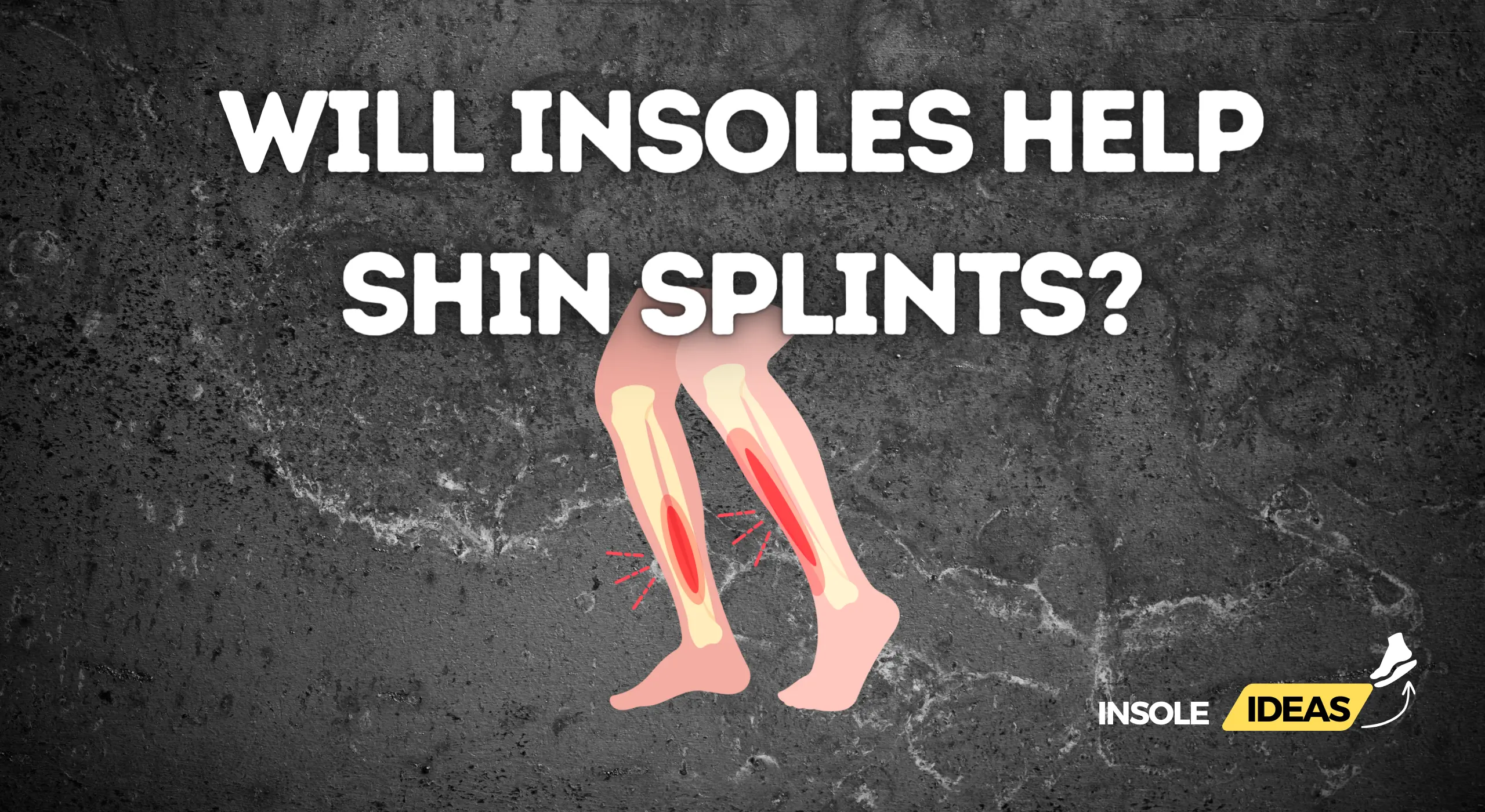Will insoles help shin splints?
Explanation of Shin Splints
Shin splints, medically known as medial tibial stress syndrome (MTSS), refer to pain along the shinbone (tibia), typically on the inner edge of the bone. It’s a common condition among athletes and individuals who engage in activities that involve repetitive stress on the lower legs, such as running, dancing, or military training. Shin splints occur due to excessive force or stress on the shinbone and the connective tissues that attach muscles to the bone.
Purpose of Insoles in Managing Shin Splints
Insoles are crucial in managing shin splints by providing additional support, cushioning, and foot alignment. They help distribute pressure more evenly across the foot and reduce the impact on the lower legs during physical activities. By absorbing shock and minimizing excessive pronation or supination, insoles can alleviate strain on the shinbone and surrounding muscles, reducing the risk of shin splint development or relieving existing symptoms.
Understanding Shin Splints
Definition and Causes
Shin splints are characterized by pain and inflammation along the inner edge of the shinbone, typically occurring during or after physical activity. The condition is often caused by repetitive stress or overuse of the muscles, tendons, and bone tissue of the lower legs. Factors contributing to shin splints include: Sudden increases in activity intensity or duration Poor biomechanics, such as flat feet or high arches Inadequate footwear or worn-out shoes Hard or uneven running surfaces Muscle imbalances or weakness in the lower legs
Symptoms and Effects on Physical Activity
The symptoms of shin splints may include: Pain along the inner edge of the shinbone, which may be dull or sharp Tenderness, swelling, or inflammation in the affected area Discomfort or pain that worsens with physical activity, especially running or jumping Pain that persists even at rest or during daily activities Shin splints can significantly impact physical activity and performance, leading to discomfort, reduced mobility, and limitations in training or sports participation. If left untreated, shin splints can progress to more severe complications, such as stress fractures or chronic pain syndromes. Therefore, prompt recognition and appropriate management of shin splints are essential for preventing long-term consequences and promoting recovery.
Mechanism of Insoles in Managing Shin Splints
How Insoles Reduce Stress on the Shins
Insoles help manage shin splints by providing support and cushioning to the feet, reducing stress and impact on the shins. By absorbing shock and redistributing pressure across the foot, insoles minimize the strain on the muscles and connective tissues along the shinbone. Additionally, insoles can help improve biomechanical alignment and stability, which reduces the risk of overpronation or supination that can contribute to shin splint development. Overall, insoles act as a protective barrier between the foot and the ground, reducing the load on the lower legs and alleviating symptoms associated with shin splints.
Types of Insoles Recommended for Shin Splints
Several types of insoles are recommended for managing shin splints:
Arch-support insoles: These insoles provide additional support to the foot’s arch, helping to improve alignment and reduce strain on the shinbone. They are particularly beneficial for individuals with flat feet or high arches and those with biomechanical issues that contribute to shin splints.
Cushioned insoles: Cushioned insoles offer extra padding and shock absorption, which helps to minimize impact on the lower legs during physical activities. They provide a softer surface for the foot to land on, reducing the strain on the muscles and tissues in the shins.
Orthotic insoles: Custom-made insoles are tailored to the individual’s foot shape and biomechanics, providing personalized support and alignment. These insoles can address specific issues contributing to shin splints, such as overpronation or muscle imbalances, and help promote proper foot function.
Effectiveness of Insoles for Shin Splints
Research Findings on the Effectiveness of Insoles
Research studies have shown promising results regarding the effectiveness of insoles in managing shin splints. A systematic review published in the British Journal of Sports Medicine found that orthotic insoles and shock-absorbing insoles effectively reduced pain and improved function in individuals with shin splints. Similarly, a study published in the Journal of Orthopaedic & Sports Physical Therapy concluded that custom orthotic insoles significantly reduced pain and improved function in patients with medial tibial stress syndrome (MTSS), a common form of shin splints.
Personal Testimonials and Experiences
Many individuals with shin splints have reported positive experiences using insoles as part of their treatment regimen. Personal testimonials often highlight the relief of pain and discomfort and improvements in performance and mobility with insoles. Athletes, in particular, may find that insoles allow them to continue training and competing while managing shin splint symptoms effectively. Overall, personal experiences reinforce the notion that insoles can be a valuable tool in alleviating shin splint symptoms and promoting recovery.
Recommendations and Best Practices
When to Consider Using Insoles for Shin Splints
Insoles can be considered for managing shin splints when individuals experience persistent pain or discomfort along the shinbone during or after physical activity. If conservative measures such as rest, ice, and stretching fail to alleviate symptoms, using insoles may be beneficial. Additionally, individuals with biomechanical issues such as flat feet, high arches, or overpronation may benefit from using supportive insoles to help correct alignment and reduce strain on the shins.
Choosing the Right Type of Insoles
When selecting insoles for shin splints, choosing the type that addresses the individual’s specific needs and preferences is essential. Arch-support insoles are suitable for individuals with arch-related issues, providing additional support and stability to the foot. Cushioned insoles offer extra padding and shock absorption, which can help minimize the impact on the shins during physical activities. Custom orthotic insoles are tailored to the individual’s foot shape and biomechanics, providing personalized support and alignment. Consulting with a healthcare professional or podiatrist can help determine the most suitable insoles for managing shin splints effectively.
Other Complementary Treatments or Preventive Measures
In addition to insoles, other complementary treatments and preventive measures can help manage shin splints and reduce the risk of recurrence. These may include:
They are stretching and strengthening exercises for the lower legs to improve flexibility and muscle balance.
Proper footwear selection with adequate cushioning and support to minimize impact on the shins.
Gradual progression of activity intensity and duration to avoid overuse and excessive stress on the lower legs.
Cross-training and incorporating low-impact activities such as swimming or cycling to reduce strain on the shins.
Rest and recovery periods allow the body to heal and prevent overtraining.
Conclusion
Summary of the Role of Insoles in Managing Shin Splints
Insoles play a significant role in managing shin splints by providing support, cushioning, and alignment to the feet. They help reduce stress on the shins during physical activities, alleviate symptoms, and promote recovery. Individuals can effectively manage shin splints and improve overall foot health by choosing the right type of insoles and incorporating them into a comprehensive treatment plan.
Final Thoughts on Their Efficacy and Importance in Alleviating Shin Splint Symptoms
Insoles are valuable tools in alleviating shin splint symptoms and promoting recovery. Their efficacy lies in reducing strain on the shins, improving biomechanical alignment, and enhancing comfort during physical activities. While insoles alone may not be sufficient to address shin splints, they can complement other treatment modalities and preventive measures to achieve optimal outcomes. By incorporating insoles into a comprehensive management plan, individuals can experience relief from shin splint symptoms and enjoy improved mobility and performance.




